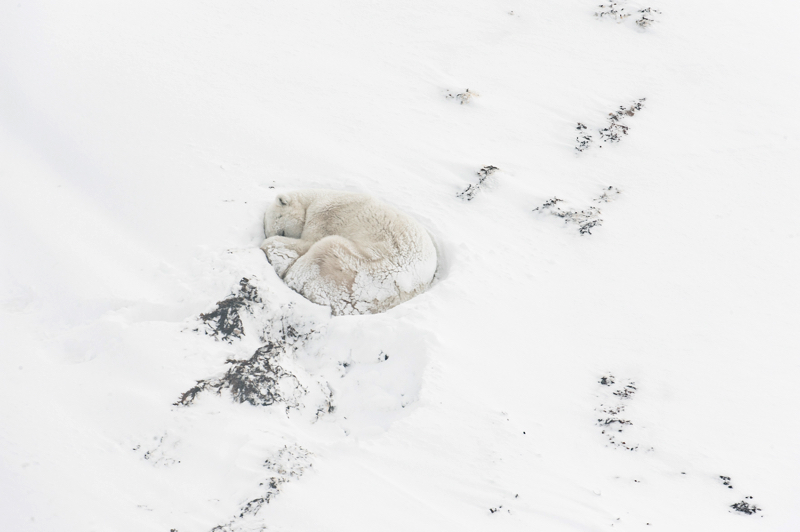Cryptic white
September 27, 2023

One of the most fascinating miracles in fauna is how animals can adapt constantly, to each other, their enemies, climate and their environment. Both predators and prey animals are never merely a static feature of the environment. Some of the adaptations include rapid escape mechanisms. Other adaptations involve developing better protection tools. Sharper teeth. Poison. Finer tentacles. Camouflage is another clever form of adaptation. It’s even actually one of the key evolutionary mechanisms of this planet. Widespread throughout nature, camouflage includes adaptation of skin texture, coloration, pattern, brightness, intensity, form.
Take for instance a polar bear (Ursus maritimus), the largest bear species. With their white appearance they can blur in with their surroundings of the white polar Arctic ice. Having their living habitat in sea-ice covered areas, they use the ‘ice covered sea’ as a platform for hunting ringed and bearded seals, but also for mating, resting and traveling. They are solitary creatures. They can sit motionless for days to catch a seal in a seal’s breathing hole, an efficient way to hunt without losing energy.
To indicate the cryptic role of the colour white against the icy white background, scientists came up with the colour ‘snow white’ first to label the colour of the polar bear. Yet, when more explorers of the 19th century set out for the Artic, the whites they found were manifold and more richly textured. For instance, when observed more closely the fur of the polar bear ranges from strikes of yellowish white, to rusty brownish whites and in different sun settings, even towards a reddish white. One ‘white’ that was visible on the fur of the polar bear was not a white, but even Straw Yellow, one of Abraham Gottlob Werner’s (1749 – 1817) original yellows. It was a sulphur yellow mixed with much grey white and a little ochre yellow.
Moving forward to our century, it has been discovered that the fur of the cryptic, elusive, geographically remote species, is a pigment-free fur that gives them the appearance of being white. In fact, its hairs are transparent and hollow, bouncing back sunlight, giving a luminescence effect.
Strangely enough, cryptic colouration is a trait that is antipredator behaviour. It makes sure you are not detected by undesirable predators. Yet there are no predators going after the polar bear. So how come the polar bear evolved its cryptic appearance. To reduce the likelihood of detection/recognition by humans?